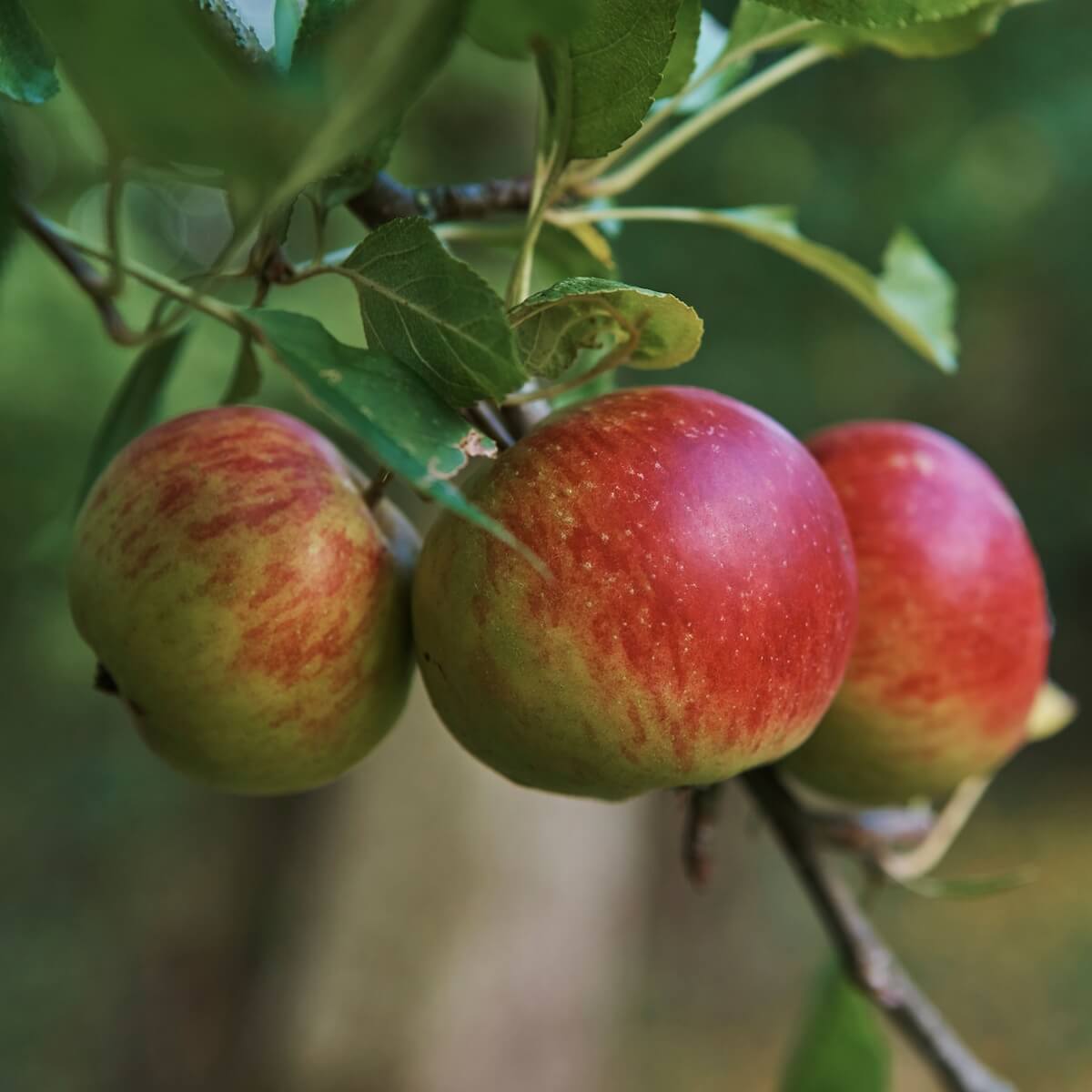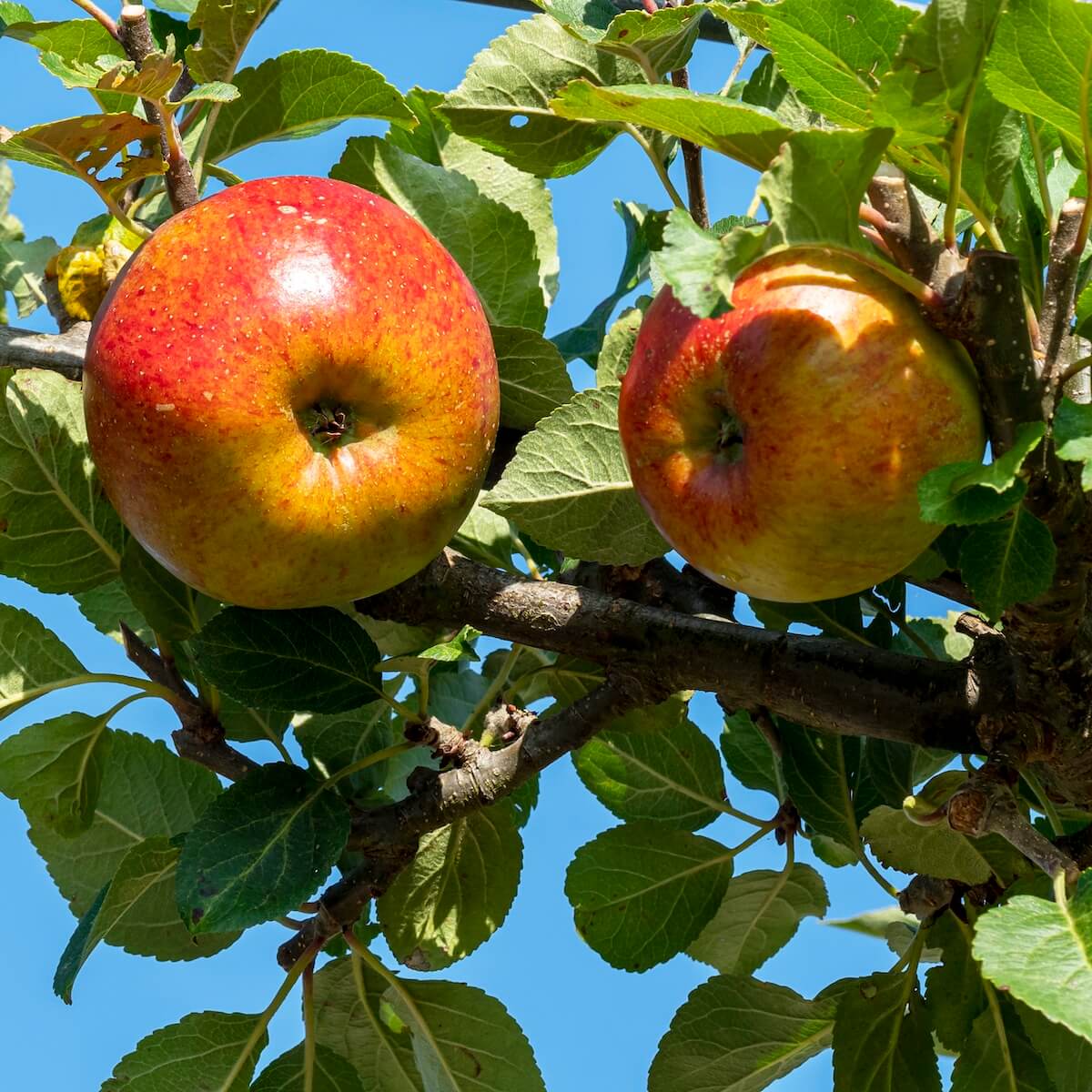
Position
- Best grown in full sun, though it can tolerate some light shade
- South, east, or west-facing positions are ideal for optimal fruit development
- Choose a sheltered position protected from strong winds to ensure blossom and fruit are unaffected
Hardiness
- Hardy down to approximately -20°C to -15°C (-4°F to 5°F)
- Suitable for UK winters, but protect blossoms from late spring frosts to prevent damage
Soil
- Grows well in moist but well-draining soil
- Loamy or slightly sandy soils rich in organic matter are ideal
- Avoid waterlogged soil, which can harm the roots or crown
- Prefers slightly acidic to neutral soil (pH 6.0–7.0)
- Can tolerate mild alkalinity, but ensure the soil is well-fertilised for best growth
- Grab a soil test kit and ensure the perfect conditions for growth
Height
- Grows to approximately 3–4.5 metres (10–15 feet) depending on rootstock selection and care
- Trees can be maintained at a smaller size through pruning and training
Seasons of Interest
- Spring (April-May): Displays clusters of pale pink and white blossoms that attract pollinators
- Summer (June-August): Retains rich green foliage, offering structure and shade in the garden
- Autumn (September-October): Fruit ripens to a beautiful orange-red, producing delicious crisp apples
- Autumn Colour: Modest golden to yellow leaf colour before shedding
- Winter: Bare branches add structural interest in dormant months
Additional Notes
- Partial Self-Fertility: Crops better when paired with pollinators such as ‘James Grieve’ or ‘Egremont Russet’
- Harvest Time: Produces juicy, sweet, and aromatic dessert apples ready for picking in September to October
- Rootstock Choices: M27 or M9 for small gardens; MM106 for moderate growth; MM111 or M25 for a larger, vigorous tree
- Pruning and Training: Requires regular winter pruning to shape and encourage healthy growth
- Thinning: Thin fruits in midsummer to ensure larger, high-quality apples
- Soil Preparation: Apply mulch in spring and maintain consistent watering during dry spells
- Health and Longevity: Generally disease-resistant, but monitor for common pests like codling moth
- Storage: Fruit stores well for up to 4–8 weeks when kept in cool, dry conditions
- Versatility: Excellent for eating fresh, juicing, or cooking. Great for small gardens or home orchards
Apple Lord Lambourne: The Juicy Dessert Apple Worth Growing
The Lord Lambourne apple tree is a high-quality dessert apple renowned for its sweet and juicy taste. Introduced in 1907 and raised by Laxton in Bedford, this variety has become a favourite among gardeners for its reliable crops of apples. With an attractive flavour and an aromatic profile, this apple tree is particularly suitable for northern regions. Awarded the RHS Award of Garden Merit, it remains a top choice for those looking to grow a range of apples in their gardens.
Why Choose the Lord Lambourne Apple Tree?
Apple Lord Lambourne is a reliable mid-season variety known for its excellent flavour and regular cropping. As it is not self-fertile, it requires a compatible pollination partner to set fruit successfully. It belongs to pollination group 2, meaning it benefits from a pollination partner such as James Grieve or Worcester Pearmain. While this apple tree performs well in a pair or group, it won’t produce a good crop if planted alone.
How to Grow a Lord Lambourne Apple Tree
What Are the Best Growing Conditions for Lord Lambourne?
The Lord Lambourne apple tree thrives in well-drained soil and prefers a sunny location. It is well-suited to growing in both gardens and orchards. Adding compost before planting will help enrich the soil for strong growth.
What Type of Rootstock Is Best for Lord Lambourne?
This variety is commonly grafted onto MM106 rootstock, which offers a good balance of vigour and size. A dwarf rootstock is an excellent option if you have limited space.
How Should I Prune a Lord Lambourne Apple Tree?
Pruning apple trees is essential to maintaining their shape and productivity. Prune during the dormant period, removing lateral branches that overcrowd the tree. This encourages fruit buds to form and results in regular crops of apples being grown.
When Does the Lord Lambourne Apple Ripen?
The apples ripen in late September, often benefitting from a frost or two to enhance their sweet and juicy flavour.

What Pollination Partners Work Best for Lord Lambourne?
Lord Lambourne belongs to pollination group 2 and benefits from nearby apple trees, such as James Grieve and Worcester Pearmain, to increase fruit production. Please check out my article here for more information on Apple pollinating groups.
Can I Grow a Lord Lambourne Apple Tree in a Small Garden?
Yes! The tree can be grown as espaliers or in containers, especially when using a dwarf rootstock.
Where Can I Buy a Lord Lambourne Apple Tree?
From Darren’s Patch
I don’t currently have a Lord Lambourne apple tree in my garden, but it’s one I often recommend. I’ve seen it growing beautifully in friends’ plots and community orchards, and it never fails to impress. The apples have that lovely crisp texture and a sweet-sharp flavour that’s spot on for eating fresh. What stands out to me is how reliable and well-suited it is to UK conditions—it handles our climate well and produces a steady crop year after year. Lord Lambourne is an excellent option after a fuss-free dessert apple that doesn’t need pampering. I’d happily make space for one if I had the room!
![]()
Key Points to Remember:
- The Lord Lambourne apple is a high-quality dessert cultivar introduced in 1907
- It produces regular crops of apples and belongs to pollination group 2
- Prune during the dormant period to maintain productivity
- It ripens later in the season, benefiting from a frost or two to enhance flavour
- Available at garden centres, nurseries, and online
Apple ‘Lord Lambourne’ is a versatile and reliable dessert apple variety well-suited to UK gardens. With sweet, aromatic fruit and manageable growth, it offers excellent cropping potential and adds year-round interest to any garden. Proper pruning, watering, and pollination ensure a healthy, productive tree and a harvest of delicious apples. Following these growing tips, you can enjoy Lord Lambourne apples fresh from your garden every season!
To see the RHS article, please click here.
Want to learn about other apple varieties? Read about Apple Laxton’s Superb here.
For more information on Fruit for your garden, please click here.
Frequently Asked Questions
Q: What are the best conditions for growing a Lord Lambourne tree?
A: Apple Lord Lambourne thrives in well-drained soil and requires full sun for at least six hours daily. It prefers a slightly acidic environment, so consider this when selecting a planting location.
Q: Can I buy a Lord Lambourne tree online?
A: Absolutely! You can find Lord Lambourne trees for sale online and at garden centres. Ensure you purchase from a reputable nursery specialising in fruit trees to get a healthy Malus domestica Lord Lambourne.
Q: How do I care for my Lord Lambourne?
A: Caring for your Lord Lambourne tree involves regular watering, especially during dry spells. Mulch around the base to suppress weeds and grass, and tie the tree to a stake if it’s young to encourage straight growth.
Q: When does Lord Lambourne typically flower?
A: Lord Lambourne typically flowers between April and May. These beautiful blossoms indicate that the tree is healthy and ready to produce fruit.
Q: What does the flavour of a Lord Lambourne taste like?
A: Lord Lambourne has a delightful flavour with sweetness and a slight acidity balance. It is perfect for eating fresh or using in desserts, making it a fantastic variety of apples for any garden.
Q: Is the Lord Lambourne apple tree disease-resistant?
A: While no tree is entirely immune, Lord Lambourne is resistant to common pests and diseases such as scab, making it a resilient choice for your garden.
Q: What pollination group does Lord Lambourne belong to?
A: Lord Lambourne is part of pollination group 2. This means it needs a compatible pollination partner, so consider planting another eating apple tree nearby to ensure a good fruit set.
Q: How long does a Lord Lambourne take to produce fruit?
A: A Lord Lambourne apple tree typically takes 3 to 4 years to produce good crops. Patience is rewarded with delicious apples once the tree reaches maturity.
Q: Are there any awards for the Lord Lambourne apple tree?
A: Yes! The Royal Horticultural Society (RHS) has awarded the Lord Lambourne apple tree the Award of Garden Merit (AGM), a testament to its quality and performance in gardens.
Q: What should I do if my Lord Lambourne apple tree has an old tree look?
A: If your Lord Lambourne apple tree appears aged and less productive, consider pruning it back to encourage new growth. Removing dead or diseased wood will help rejuvenate the tree and improve fruit production.
